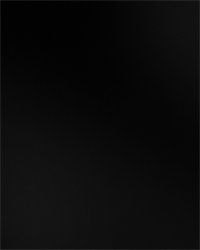Some Questions - Jon Rafman
How has the internet changed the way that art is discussed, displayed, curated, experienced or distributed?
To my mind, this question contains within itself a host of other questions ranging from “what is the very nature of the curating act” to “what is essential or non essential to the nature of the experience of art?”
The Rise of the Installation View
A major development has been to make art that is specifically constructed to be displayed on the internet. Art exhibited online is mediated through the same neutralizing interface. This art is created with the knowledge that the primary context in which the work will be experienced is a very private one. Yet, the work has great distribution possibilities. Even when an art piece, like a sculpture, is not strictly internet-based, artists have become increasingly aware that documentation on their work is an essential aspect of ‘getting your work out there’. The online installation view of a work of art will probably be seen by considerably more people than at the physical exhibition itself. One no longer has to be in New York! As economic or travel aspects become less fundamental considerations, much art has become truly accessible but with the important caveat that the physical work of art may not be present. In fact, in recent years, most of my own experience of my art in a gallery context has been mediated through installation views of my pieces. Internet culture may be celebrated for making art more accessible and for leveling the playing field, yet is critical that we examine the meaning and consequence of the lack of the tangible presence of the object. Analogous questions have been raised by artists and critics with regard to internet users interactions in virtual worlds such as Second Life and Facebook. This immateriality, this lack of physicality makes us wonder about the relation of the real self to the virtual self.
The Rise of the Curator
The question of curating art appears to confront the contemporary experience more dramatically than in the past as there is an overwhelming amount of data with which we are constantly being inundated. Images and symbols from all historic periods and of all weights and value float about in an undifferentiated way on the internet. To fend off being submerged, we feel the need to take control and “select” out that to which it is worth paying attention. We wish to know if one representation of experience is to be valued or valued more than another. In fact, search engines have begun to sort and rank in their quasi-benevolent, quasi- imperial manner. Yet the historic role of critic and curator has also emerged, primarily in blogs. This emergence of blogger curators reflects a wish once more for differentiation of what is significant, what is of value.





























